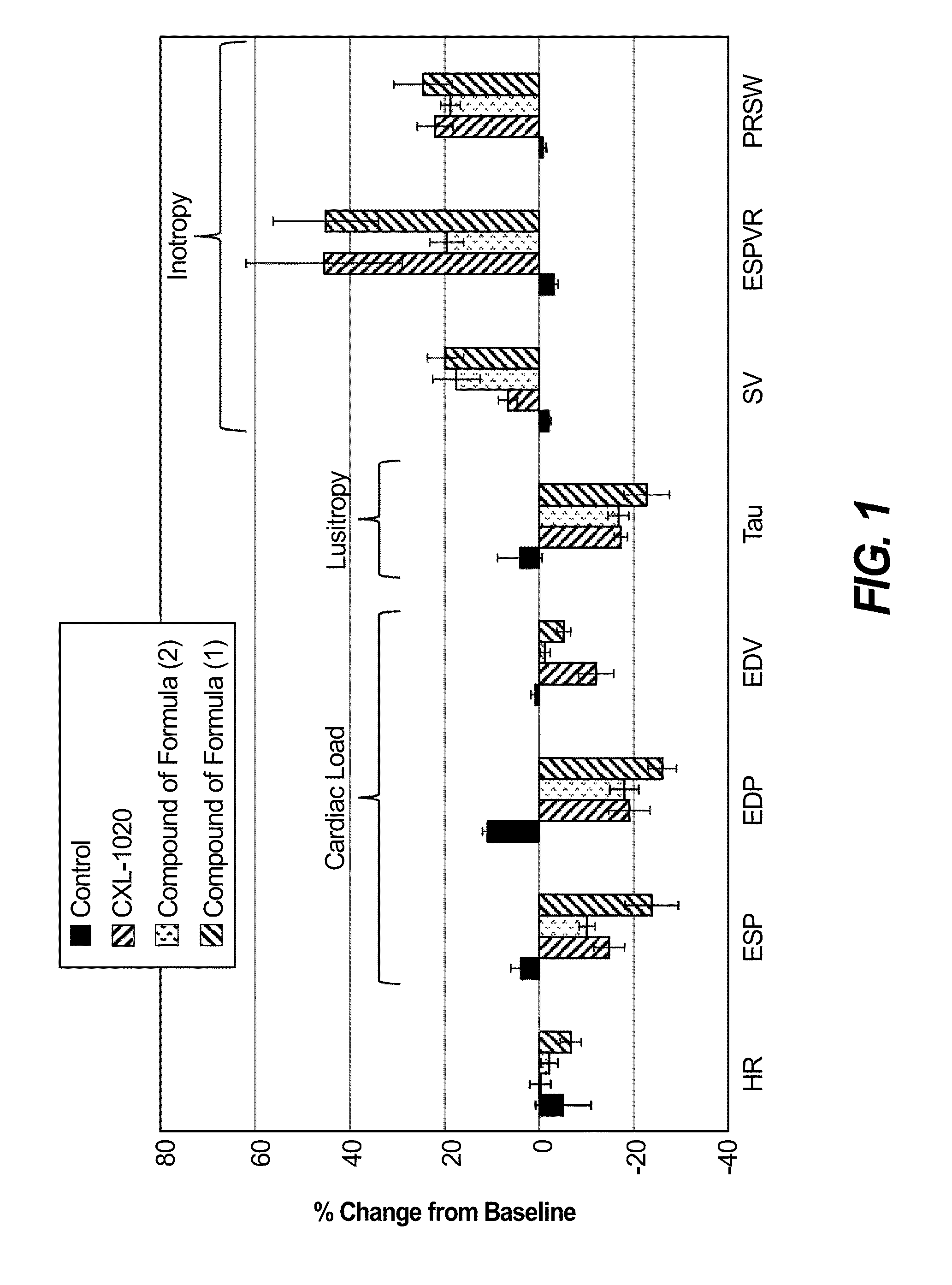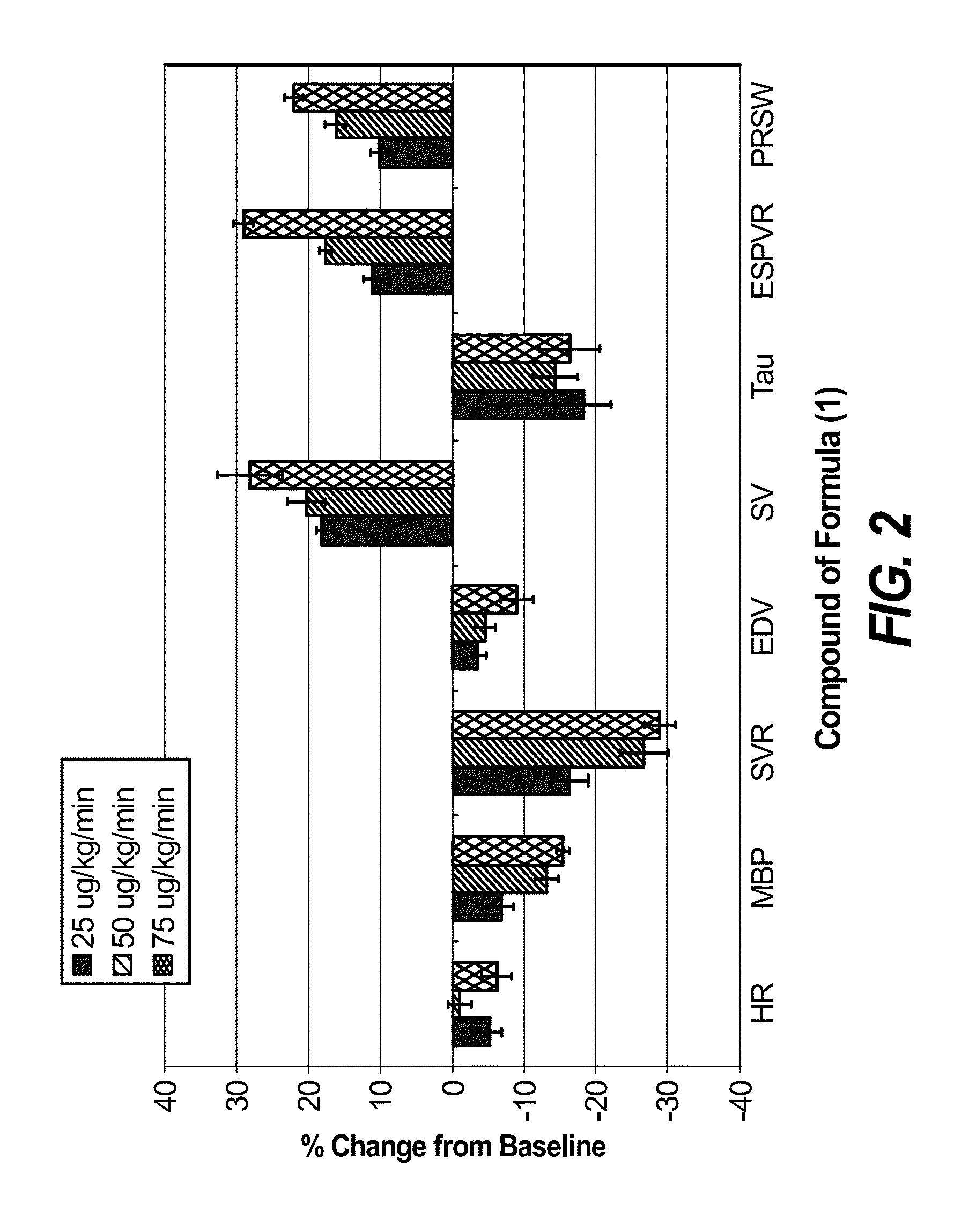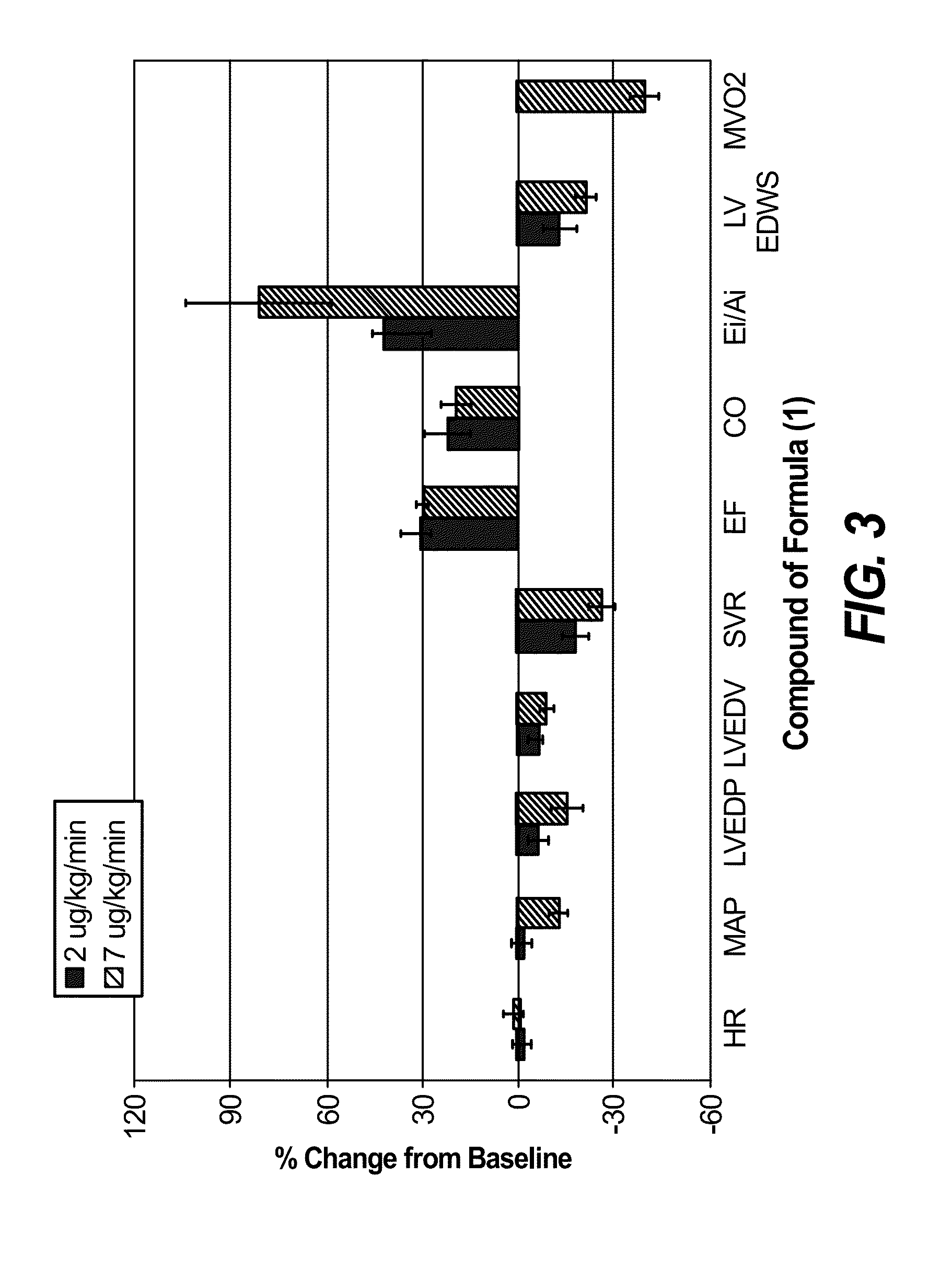Nitroxyl donors with improved therapeutic index
a technology of nitroxyl donors and therapeutic index, which is applied in the direction of biocide, drug composition, cardiovascular disorder, etc., can solve the problems of hampered development of nitroxyl donating compounds for clinical use, compound would not be a viable human therapeutic candidate, and failure to understand these factors
- Summary
- Abstract
- Description
- Claims
- Application Information
AI Technical Summary
Benefits of technology
Problems solved by technology
Method used
Image
Examples
example 1
Preparation of N-Hydroxy-5-methylfuran-2-sulfonamide (1)
[0153]To a solution of hydroxylamine (0.92 mL of a 50% aqueous solution; 13.8 mmol) in THF (6 mL) and water (2 mL) cooled to 0° C. was added 5-methylfuran-2-sulfonyl chloride (1 g, 5.5 mmol) as a solution in THF (6 mL) dropwise so as to maintain the temperature below 10° C. The reaction was stirred for 5 minutes, after which time TLC (1:1 hexane:ethyl acetate (H:EA)) showed substantially complete consumption of the sulfonyl chloride. The reaction was diluted twice with 50 mL dichloromethane (DCM) and the organic portion was separated and washed with water (10 mL). The organic portion was dried over sodium sulfate, filtered and concentrated under reduced pressure. The product was chromatographed by silica gel chromatography eluting with heptanes:EtOAc followed by trituration with heptane to provide the title compound as a yellow solid (0.59 g, yield 61%). LC-MS tR=0.91 min; 1H NMR (DMSO, 500 MHz) 8 ppm 9.82 (1H, d, J=3.1 Hz), 9....
example 2
Preparation of N-Hydroxy-3-methanesulfonylbenzene-1-sulfonamide (2)
3-Methanesulfonylbenzene-1-sulfonyl chloride
[0154]The intermediate 3-methanesulfonylbenzene-1-sulfonyl chloride was synthesized according to the methods disclosed in Park et al., J. Med. Chem. 51(21):6902-6915 (2008). Specifically, methyl sulfonyl benzene (110 g, 0.7 mol) was heated for 18 hours at 90° C. in chlorosulfonic acid (450 mL, 6.7 mol) after which time the reaction mixture was allowed to cool to a temperature of about 21° C. before slowly being poured onto crushed ice. The resulting slurry was twice extracted into EtOAc (2 L for each extraction). The organic portions were combined and washed with brine (50 mL) before being dried over sodium sulfate, filtered and concentrated under reduced pressure to provide the intermediate sulfonyl chloride as an off white solid (125 g, yield 75%). 1H NMR (400 MHz, CDCl3) δ ppm 8.61 (1 h, t, J=1.7 Hz), 8.35-8.31 (2H, m), 7.90 (1H, t, J=7.9 Hz), 3.15 (3H, s).
N-Hydroxy-3-me...
example 3
5.2 Example 3
Nitroxyl Production as Determined via N2O Quantification
[0156]Nitrous oxide (N2O) is produced via the dimerization and dehydration of HNO, and is the most common marker for nitroxyl production (Fukuto et al., Chem. Res. Toxicol. 18:790-801 (2005)). Nitroxyl, however, can also be partially quenched by oxygen to provide a product that does not produce N2O (see Mincione et al., J. Enzyme Inhibition 13:267-284 (1998); and Scozzafava et al., J. Med. Chem. 43:3677-3687 (2000)). Using either nitrous oxide gas or Angeli's salt (AS) as a standard, the relative amounts of N2O released from compounds of the disclosure was examined via gas chromatography (GC) headspace analysis.
[0157]A procedure for determining the relative amounts of N2O released from compounds of the disclosure is as follows. GC was performed on an Agilent gas chromatograph equipped with a split injector (10:1 splitting), microelectron capture detector, and a HP-MOLSIV 30 m×0.32 mm×25 μm molecular sieve capillary...
PUM
| Property | Measurement | Unit |
|---|---|---|
| pH | aaaaa | aaaaa |
| equilibrium solubility | aaaaa | aaaaa |
| equilibrium solubility | aaaaa | aaaaa |
Abstract
Description
Claims
Application Information
 Login to View More
Login to View More - R&D
- Intellectual Property
- Life Sciences
- Materials
- Tech Scout
- Unparalleled Data Quality
- Higher Quality Content
- 60% Fewer Hallucinations
Browse by: Latest US Patents, China's latest patents, Technical Efficacy Thesaurus, Application Domain, Technology Topic, Popular Technical Reports.
© 2025 PatSnap. All rights reserved.Legal|Privacy policy|Modern Slavery Act Transparency Statement|Sitemap|About US| Contact US: help@patsnap.com



